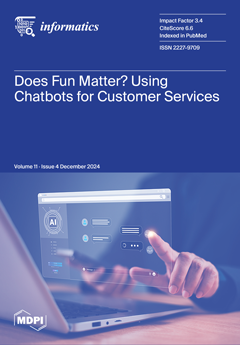Group chat socialization is increasingly central to online activities, yet design strategies to enhance this experience remain underexplored. This study builds on the Stimuli–Organism–Response (SOR) framework to examine how usability, chat rhythm, and user behavior influence emotions and participation in group chats. Using
[...] Read more.
Group chat socialization is increasingly central to online activities, yet design strategies to enhance this experience remain underexplored. This study builds on the Stimuli–Organism–Response (SOR) framework to examine how usability, chat rhythm, and user behavior influence emotions and participation in group chats. Using data from 546 users in China, a relevant demographic given the dominance of platforms like WeChat in both social and professional settings, we uncover insights that are particularly applicable to highly connected digital environments. Our analysis shows significant relationships between usability (γ = 0.236,
p < 0.001), chat rhythm (γ = 0.172,
p < 0.001), user behavior (γ = 0.214,
p < 0.001), and emotions, which directly impact participation. Positive emotions (γ = 0.128,
p < 0.05) boost participation, while negative emotions (γ = −0.144,
p < 0.01), particularly when linked to user behaviors, reduce it. Additionally, we discussed the mediating effects, notably that usability significantly impacts participation through positive emotions, while user behavior exerts a significant influence on participation through negative emotions. This research offers actionable design strategies, such as tailoring sensory inputs to reduce cognitive load and implementing reward systems to motivate participation. Positive feedback mechanisms enhance engagement by leveraging the brain’s reward systems, while optimized error messages can minimize frustration. These insights, which are particularly relevant for China’s active group chat culture, provide a framework to improve platform design and contribute valuable findings to the broader HCI field.
Full article





